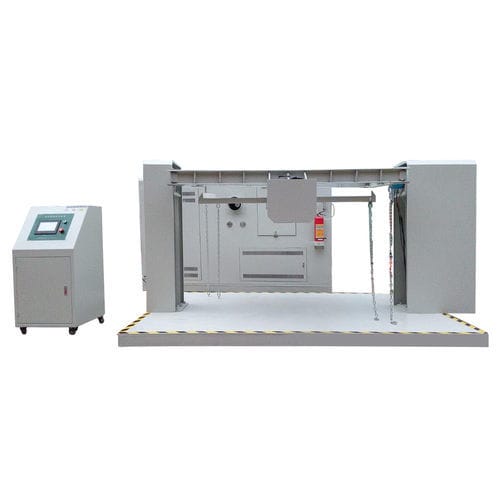
- Metrology - Laboratory
- Metrology and Test Equipment
- Performance testing machine
- ATMARS INDUSTRY CO., LIMITED
Performance testing machine ABR-1800manualbattery

Add to favorites
Compare this product
Characteristics
- Test type
- performance
- Operating mode
- manual
- Test material
- battery
Description
Battery Rotation Test Machine is suitable for simulating the traction battery pack or system to perform the flip rotation test around the X-axis or the Y-axis according to standard GB/T 31467.3-2015 and equivalent ISO 12405-3:2014.
Product Description:
Battery rotation test machine is an ideal battery test machine for traction battery pack and system to perform the flip rotation test around the X-axis or the Y-axis. During the X-axis/Y-axis switching process, it is not necessary to re-fix the battery pack, and the safety test evaluates the performance.
Related Standard Test Requirements:
GB/T 31467.3-2015 and equivalent ISO 12405-3:2014
GB/T 31467.3-2015 Lithium-ion traction battery pack and system for electric vehicles – Part 3: Safety requirements and test methods (ISO 12405-3:2014, Electrically propelled road vehicles – Test specification for Lithium-ion traction battery packs and systems – Part 3: Safety performance requirements, NEQ) requires that the traction battery pack or system has no leakage, cracked casing, fire or explosion, and maintain a reliable connection. The structure is intact, and the insulation resistance value after the test is not less than 100 Ω/V.
Test Method:
1. The test object is a battery pack or system.
2. The test object is rotated 360° around the X axis at a speed of 6°/s, then rotated in 90° increments, held at intervals of 90° for 1 h, rotated 360° to stop, and observed for 2 h.
3. The test object is rotated 360° around the Y axis at a speed of 6°/s, then rotated in 90° increments, held at intervals of 90° for 1 h, rotated 360° to stop, and observed for 2 h.
Other ATMARS INDUSTRY CO., LIMITED products
Battery Testing Equipment
Related Searches
- Test machine
- Test cabinet
- PC-controllable testing machine
- Automatic test machine
- Temperature test cabinet
- Compression test machine
- Climatic test chamber
- Humidity test cabinet
- Flexure testing machine
- Tensile test machine
- Stainless steel test cabinet
- Hydraulic test machine
- Plastic test machine
- Automobile test cabinet
- Pull testing machine
- Environmental test cabinet
- Test chamber on casters
- Vehicle test chamber
- Durability test chamber
- Shearing testing machine
*Prices are pre-tax. They exclude delivery charges and customs duties and do not include additional charges for installation or activation options. Prices are indicative only and may vary by country, with changes to the cost of raw materials and exchange rates.






